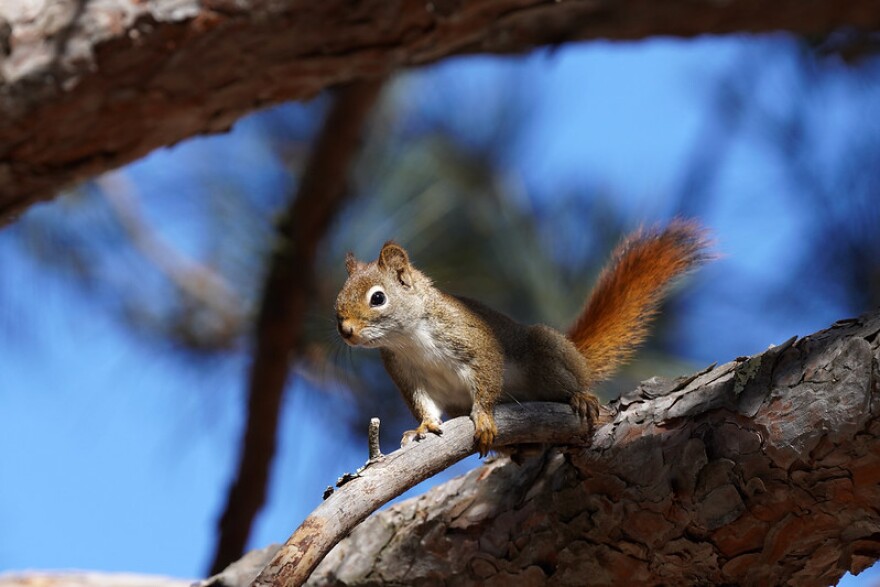The heavy snow over the past few days may have closed many schools, but it sure didn’t keep kids cooped up inside: enjoy these three reports!
Please don’t hesitate to reach out with your observations, nature tales and insights! Get in touch with me (cmitchell@kaxe.org), John Latimer (jlatimer@kaxe.org), or text "phenology" to 218-326-1234.
North Shore Community School near Duluth
“Hello from North Shore Community School on the north shore of Lake Superior. This is the Phenology Report for the week of March 16, 2024. My name is Jon, and I am your phenologist for this week!
“Tuesday, March 19 was the first day of spring, often called the spring equinox. If you ever hear anyone say, ‘vernal equinox,’ it means the same as spring equinox. The term equinox comes from the Latin word ‘equinoxium,’ meaning ‘equality between day and night.’ Vernal also comes from Latin and means ‘spring.’

“Even though it is now officially spring, we often get snowstorms in March along the North Shore. This March is no exception: Sunday, March 24, it is predicted that snow will move into the region from the south through the morning and afternoon. The period of heaviest snow, strongest winds, and worst travel may be Sunday night into Monday. Blizzard conditions are possible, particularly along the North Shore. It is predicted that we could see anywhere from 6 to 25 inches of snow early next week!
“On Friday, March 15, bluebirds were spotted and the song of the Eastern Wood-pewee was heard in Two Harbors. On Saturday, March 16, Ms. Urban spotted a flock of Greater White-fronted Geese in Beaver Bay, rare migrants on their way to Northern Canada, Alaska, Greenland and Russia.
“On Wednesday, March 20, Mrs. Rolfe saw a gang of Wild Turkeys in her backyard! Most of these turkeys were brown, but there was one white one sticking out of all the brown turkeys. On Tuesday, March 19 Jon saw a robin in his tree while playing with his dogs.
“Buds on several types of trees are swelling, especially the maples! Mrs. Rolfe noticed on March 20 that her irises and tulips had burst through the ground.
“Mrs. Rolfe’s class checks their two tapped maple trees each morning, and we have collected from as much 2 gallons to as little as one cup in a 24-hour period. However, on March 21, Mrs. Rolfe’s class found that there was no sap from either of the two trees in their collection bags. We are hoping that it warms up more during the day so the sap starts to run again.
“On Thursday, March 22, Johnny saw a white weasel in his backyard! The weasel changes its fur from white in the winter to brown in the summer. On Wednesday, March 20, Zander saw three big piles of deer fur, and he thinks that they are shedding their winter coat.
“Most of the students in Mrs. Rolfe’s class agree that the Asian beetles are all over the place again. As temperatures warm in late winter/early spring, the beetles once again become active. This usually occurs first on the sunnier, southwest side of the building. As awakening beetles attempt to escape to the outdoors, we have learned that some inadvertently wander inward, emerging from behind baseboards, walls, attics, suspended ceilings, etc. Since Asian beetles are attracted to light, they are often seen around windows and light fixtures.
“This concludes the phenology report. Have a great week and be observant!”
West Rapids Elementary in Grand Rapids

“Hello, this is our phenology report from Mr. Cody's fourth-grade classroom at West Elementary.
“Brr! Where did the warmth go? It was a windy day for a walk. Overall, there was little progress for bud break. The red elderberry did advance its flowering. The speckled alder also had pollen present.
“We did see a large bird of prey high up in the sky. We saw a red squirrel and found a male long-jawed spider.
“There was a bush full of galls and the creek was still running clear.
“As always, get outside! Sincerely, Noelia and Willow.”
Lake of the Woods School in Baudette

“This is Athena with the phenology report from Baudette for March 16-22.
“On Saturday, the first juncos of the season were spotted just west of Baudette.
“Over the weekend, Athena noticed the buds on her aspen trees were larger and more defined than just a few days ago.
“Finally, Collin is seeing more geese in larger flocks around his home.”
That does it for this week! For more phenology, <b>subscribe</b> to our Season Watch Newsletter or visit the Season Watch Facebook page.
Funding for this project was provided by the Minnesota Environment and Natural Resources Trust Fund as recommended by the Legislative-Citizen Commission on Minnesota Resources (LCCMR).








